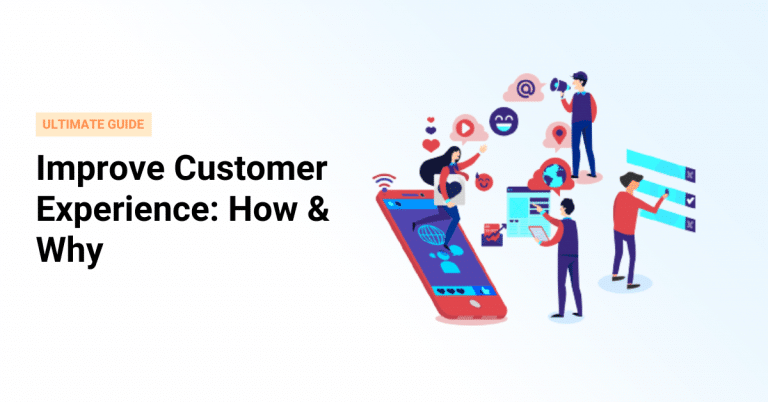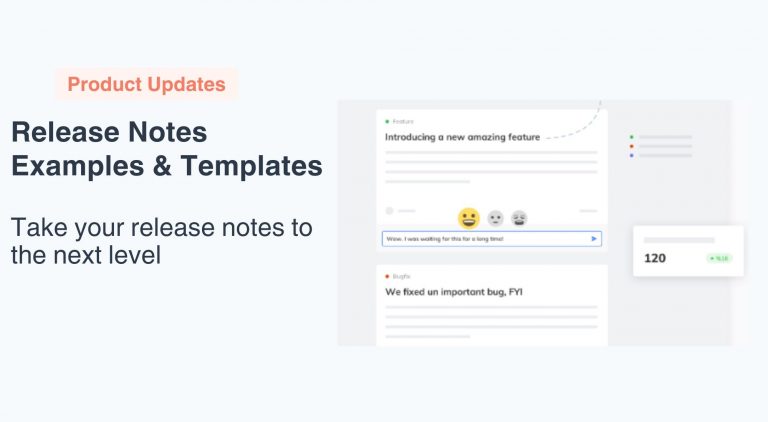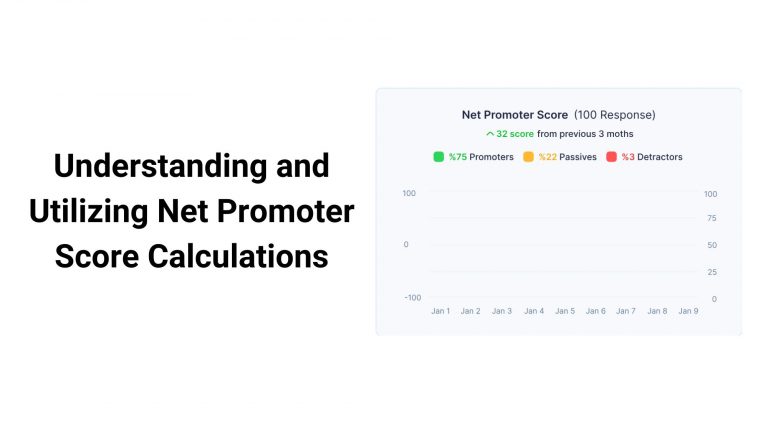Fintech is a big deal — even if the term isn’t familiar.
Most people have probably used some fintech tools today — multiple times — maybe without even knowing it.
Did you:
- Send a friend a payment on Venmo for your share of drinks last night?
- Use your iPhone to transfer funds from your savings to your checking to cover that spontaneous purchase?
- Manage your wealth with automated portfolio managers?
If you answered “yes” to any of these questions, you’ve used fintech. We use it every day, and it’s not going away.
Modern companies rely on fintech product managers to develop and execute the best tools. See what it takes to excel as a fintech product manager by honing in on the unique aspects of your role. Your company (and their customers) will thank you!
Table of Contents
- What Is Fintech?
- What Does a Product Manager in Fintech Do?
- How Does Product Management in Fintech Differ From Other Industries?
- AnnounceKit Helps Fintech Product Management Teams Focus on User Experience To Execute Product Development
What Is Fintech?
Fintech is as obvious as it seems.
Financial + Technology = Fintech
Fintech is a branch of technology used to automate how money is exchanged and how financial services are accessed. It includes apps, software, or other types of technology that make it easy to:
- Access finances
- Manage funds
- Make transactions
- And more
Business owners and consumers alike are hooked.
With fintech, everyone benefits with:
- Mobile banking platforms
- Lending platforms
- Blockchain-based currencies
- Investment tools
- Budgeting tools
Who Uses Fintech?
Well … just about everyone!
- Individuals/consumers
- Small businesses for business-to-consumer (B2C) transactions
- Companies
- Banks for business-to-business (B2B) purposes
- Clients of B2B banks
What Does a Product Manager in Fintech Do?
For fintech to work for both companies and consumers, someone has to create the product and make sure it works well. That’s where fintech product managers come in.
Fintech product managers work with a team and use innovative insights and impressive skills to take the product from creation to use to product assessment and enhancement.
Fintech product management may be just your thing if you:
- Thrive by being the front-runner for imaginative projects
- Embrace the opportunity to lead effective teams
- Possess the skills to combine marketing insights with strategic vision
- Understand how to blend technical tools with a company’s goals
With those skills, what do fintech product managers do? We’ll dive into some specifics below, but product managers in fintech can be counted on to:
- Develop and implement a product strategy
- Complete market and data research
- Know the target audience
- Comply with regulations
- Work with a team
- Test the product
- Monitor performance
- Keep up with changing trends
- Adapt product strategies
- Manage risks
#1: Product Strategy and Development
You can’t build the project without a vision. That’s what the project manager does — brings the project to life.
With an idea of the end in mind, the fintech project manager formulates the vision by:
- Investigating industry trends
- Identifying customer needs
- Designing a step-by-step plan
Though the fintech project manager is a key player, they don’t act alone. It takes a team to bring the vision to life. Collaboration is essential with:
- Software developers
- Marketing teams
- Domain experts
- Stakeholders (that includes the customers!)
Trying to make all the communication happen can feel a little like herding cats.
You need a system.
AnnounceKit has the system you need — especially if you want to know what your customers want.
With AnnounceKit’s feature request software, you can:
- Get inside your customers’ brains
- Keep track of their feature requests
- Prioritize feature projects
- Organize the items on your to-do list
It’s also a tool that keeps everyone on the same page. Everyone on the team — developers, personnel, experts, and more — stays connected.
Less like herding cats and more like smooth sailing.

Quick Setup, Easy to Use, and Many Integrations
Manage your product announcements from a single place and easily distribute them
across multiple channels.
#2: Comply With Regulations
Rules, rules, rules. You might not like them, but you have to live by them — especially in the fintech world.
The best fintech project managers know the regulations (there are a lot of them!) and make sure the product measures up to those regulations.
Again, they share that burden by consulting with legal teams. Based on the legal insight and help they receive, product managers can move ahead by designing products with compliance tools embedded in them.
The steps to legal compliance are crucial. Making mistakes in this area can be costly for the company if legal battles ensue.
As we said, regulations abound, and many of them can be complex. Though we’ll cover four common regulations below, know that there are many more, and they are constantly changing.
Know Your Customer (KYC) and Know Your Business (KYB) Obligations
Customers and businesses must prove they are who they say they are. KYC and KYB are regulated ways to verify the identities of individuals or businesses when they register for an account. This is done when users provide their identity and address when onboarding.
And that’s not a one-time process. Product managers will need to watch transaction patterns to make sure everyone remains legit as far as their identity is concerned.
Anti-Money Laundering (AML) Rules
Above all, we need to keep the bad guys out of our transactions. That’s where AML rules come in.
These regulations are created to keep the bad guys (criminals) from getting away with any number of financial crimes and illegal activities. The most common tactic they try is making illegal funds appear as legit income.
To stick to the rules, banks and other financial service providers are required to record money movement and report it to keep an eye out for money laundering and financing by terrorists.
The Office of Foreign Assets Control (OFAC)
Money moves all over the world, thus the need for foreign policy regarding how it’s done across international borders.
The OFAC helps by enforcing sanctions against:
- Nations
- Businesses; and
- Individuals and groups (like the bad guys, such as terrorists and drug traffickers)
Red Flag Rules
Red flags are important in more than just your romantic relationships.
Fraud happens all the time in finance, so knowing some red flags to look for can help fintech product managers keep it at bay.
Businesses are required to implement a fraud program in writing to recognize the warning signs of identity fraud. That way, companies can see sketchy fraud patterns, meet them head-on, and take steps to limit fraud consequences.
#4: Manage Risks and Liabilities
Fintech product managers need to be able to identify, assess, and mitigate risk for both companies and their consumers. To do this well, product managers must understand the financial world with the ability to know the issues and liabilities that could put the company and their clients at risk.
#5: Market Research
Knowing the market goes without saying. In order to make a top-notch fintech product, you need to know things like:
- Insight into the market
- Customer behavior
- Customer preferences
- Customer pain points
- Competitor info
To make the most of research efforts, follow these tips:
- Know your audience by looking deep into demographics, behaviors, surveys, interviews, etc.
- Keep an eye on the competition using analytics tools to know their strengths and weaknesses.
- Stay updated by reviewing your research from time to time since things change so quickly in the financial world.
- Use prototype testing and A/B testing to make sure your product is going to do what you want it to do.
#6: Improve Existing Products
Nothing in the fintech world is static. Dynamic changes are happening all the time in finance, and product managers have to stay on top of it.
After you’ve created and implemented a product, fintech product managers would be wise to keep a pulse on customer feedback and continue researching to stay on top of the latest trends and improvements.
To do this, product managers should:
- Watch the performance of current products
- Obtain user feedback
- Notate ways to enhance and improve products.
If you’re a product manager and you’re not using AnnounceKit, you should. We’ve got the tools to help you keep up with customer insights and product feature ideas to make your job that much more streamlined. Don’t work harder — work smarter! Get started for free.
How Does Product Management in Fintech Differ From Other Industries?
From the product management standpoint, fintech has a heightened focus on regulatory compliance, a need for deep financial expertise, rapid technological innovation, a strong emphasis on user experience, and a priority of navigating financial services and data privacy concerns.
Technology-Driven Focus
Given the name fintech, it’s not surprising that technology is at the center of this industry. Other industries may use technology as a supporting tool for their business, but fintech companies use technology as the core of their services.
As a fintech product manager, “technology” should be your middle name. The more savvy you are with the following technological advances (and the more you keep up with the rapid changes), the better you’ll be at your job:
- Machine learning
- AI
- Analytics
- Data-driven marketing
- Automated customer service technology
- Chatbots
- Fraud technology
Strict Regulatory Environment
Every company and industry has rules about how they function. But not all rules are the same, and the consequences are also not the same.
Breaking the rules can cost you dearly in the fintech world — more so than in some other industries.
On top of that, the fintech regulatory system can be complex with varying federal, state, and international regulations.
Fintech product managers have a lot to keep up with to anticipate changes and minimize risk.
Rapid Technological Innovation
We mentioned that fintech has a technology-driven focus. With that focus, product managers in this industry must stay current with the ever-changing and innovative technology. This includes:
- New products
- Changing technologies
- Artificial intelligence (AI)
- GenAI
Customer-Centric Design
Product managers in other industries must focus on many variables when producing their products. But with the emphasis on user experience in fintech, the customer is always center stage.
Because it’s totally digital, fintech focuses on user-friendly and personalized interfaces and experiences for consumers.
In addition to the many roles of a fintech product manager, collecting data about the customers, their wants, and their behavioral trends is at the top of the priority list.
Data Security and Privacy
Data security and privacy are paramount for consumers, and that’s why product managers need to make it a priority as well.
There are some super crafty scammers and data thieves on the loose, so fintech product managers must prioritize and implement data security measures within their products.
Getting it right on the front end saves a lot of time, energy, and money on the other end.
AnnounceKit Helps Fintech Product Management Teams Focus on User Experience To Execute Product Development
Make AnnounceKit a part of your fintech product management toolbox.
AnnounceKit helps you stay customer-centric by creating a platform to:
- Communicate product updates with your customers
- Increase customer product use
- Build customer trust
With our announcement board software, you can manage product announcements from one place with:
- Product updates in your app
- An interactive standalone changelog
- Feature requests stored in one central location
- The ability to communicate across multiple channels (Slack, email, mobile notifications, etc.)
- Automated product announcements from our AI Assistant
Create an account with AnnounceKit today to get started.

Quick Setup, Easy to Use, and Many Integrations
Manage your product announcements from a single place and easily distribute them
across multiple channels.






